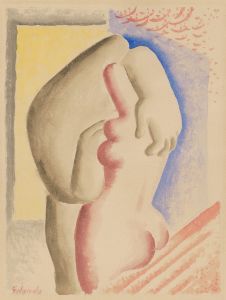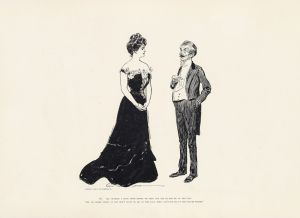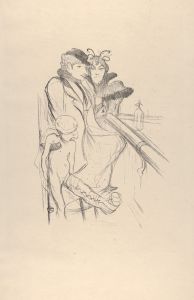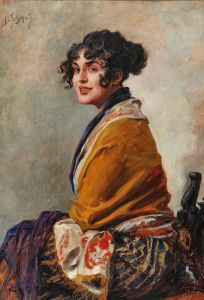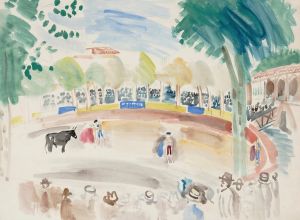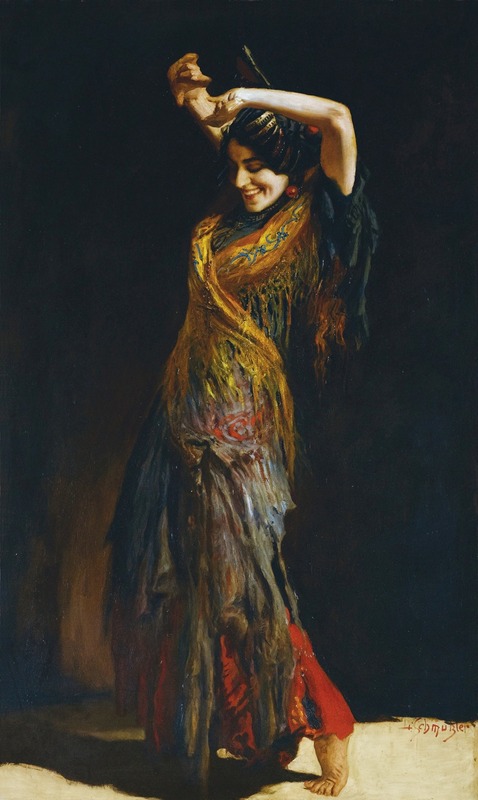
The Flamenco Dancer
A hand-painted replica of Leopold Schmutzler’s masterpiece The Flamenco Dancer, meticulously crafted by professional artists to capture the true essence of the original. Each piece is created with museum-quality canvas and rare mineral pigments, carefully painted by experienced artists with delicate brushstrokes and rich, layered colors to perfectly recreate the texture of the original artwork. Unlike machine-printed reproductions, this hand-painted version brings the painting to life, infused with the artist’s emotions and skill in every stroke. Whether for personal collection or home decoration, it instantly elevates the artistic atmosphere of any space.
Leopold Schmutzler (1864–1940) was a Bohemian-German painter known for his portraits and genre scenes. One of his notable works is "The Flamenco Dancer," which showcases his skill in capturing the vibrancy and emotion of his subjects. Schmutzler was born in Mies, Bohemia, which is now part of the Czech Republic. He studied at the Academy of Fine Arts in Vienna and later in Munich, where he settled and became an established artist.
"The Flamenco Dancer" is a striking example of Schmutzler's ability to depict movement and character. The painting features a female dancer in mid-performance, adorned in traditional flamenco attire. Her dress is elaborately decorated, and the dynamic pose captures the intensity and passion of the dance. The background is relatively simple, ensuring that the focus remains on the dancer's expressive movements and vibrant costume.
Schmutzler's work often reflected the cultural and social milieu of his time, and "The Flamenco Dancer" is no exception. Flamenco, a deeply expressive Spanish art form that includes singing, guitar playing, dance, and handclaps, has its roots in the Andalusian region of Spain. By choosing to depict a flamenco dancer, Schmutzler not only showcased his technical prowess but also paid homage to the rich cultural traditions of Spain.
The painting is characterized by its vivid colors and meticulous attention to detail. Schmutzler's use of light and shadow adds depth and dimension to the figure, creating a sense of realism and immediacy. The dancer's flowing dress and the movement of her body are rendered with a keen eye for the nuances of fabric and form, highlighting Schmutzler's background in academic training and his mastery of the human figure.
Leopold Schmutzler's career spanned several decades, during which he gained considerable recognition for his work. He was a member of the Munich Secession, an association of artists who sought to break away from traditional academic art and promote more modern approaches. Despite the changing art movements of his time, Schmutzler remained committed to his style, which combined technical precision with a keen sense of character and emotion.
"The Flamenco Dancer" remains one of Schmutzler's celebrated works, reflecting his ability to capture the essence of his subjects with both skill and sensitivity. The painting is a testament to his talent and his appreciation for the diverse cultural expressions of his era. Today, Schmutzler's works are held in various collections, and "The Flamenco Dancer" continues to be admired for its dynamic portrayal of one of Spain's most iconic cultural traditions.





